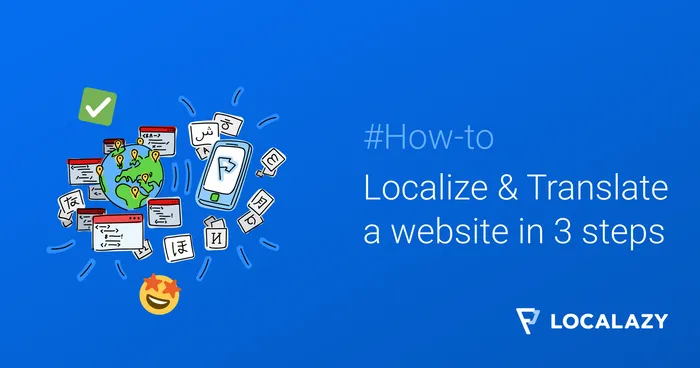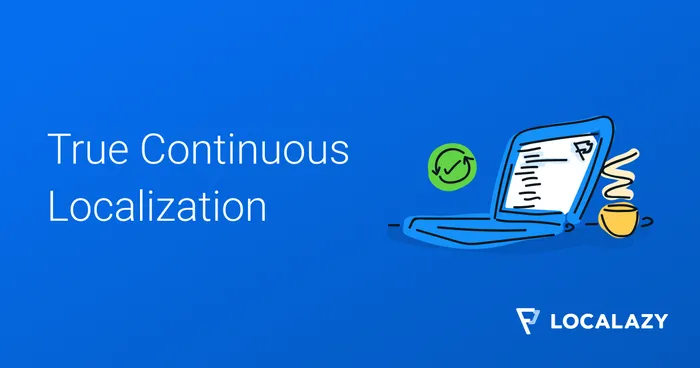Brazil, one of the world's fastest-growing economies and the biggest country in South America, offers significant opportunities for global businesses, boasting a GDP of $1.9 trillion and a population exceeding 200 million. However, to thrive in the Brazilian market, it is crucial for companies to understand and communicate effectively with the Brazilian target audience. 🇧🇷🔍 This includes the precise translation of marketing materials, products, and services into Brazilian Portuguese (PT_BR).
Accurate and culturally relevant localization can assist businesses for a myriad of reasons. Aside from expanding their reach and increasing sales, it will lead to an enhanced customer experience and the establishment of a strong brand presence through a real understanding of the country's linguistic landscape. Let's learn how this can be achieved in the instance of the Brazilian market.
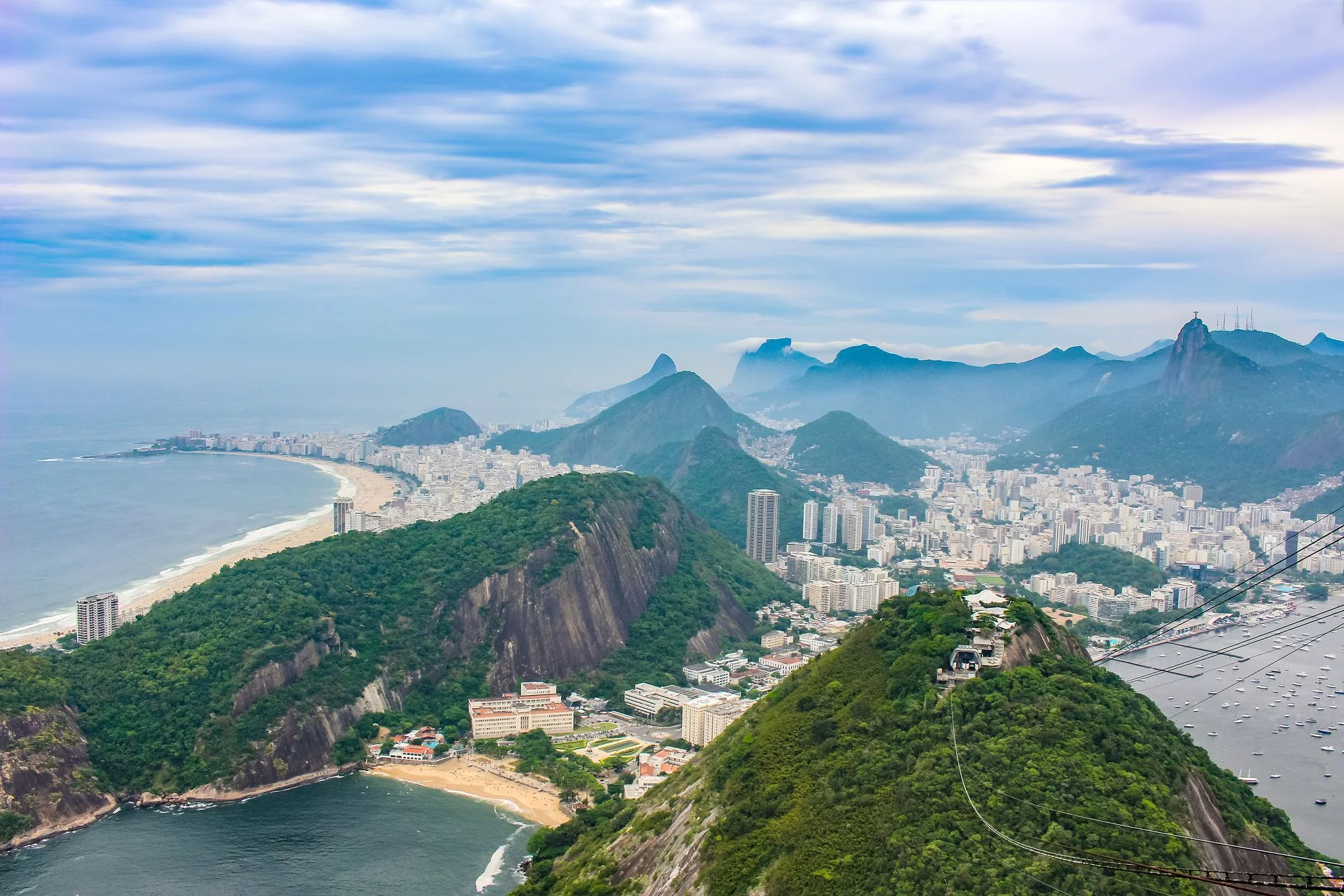
🪘 The origins of Brazilian Portuguese 🔗
Brazilian Portuguese has a rich history dating back to the 16th century, when the Portuguese first arrived in Brazil. In the 18th century, Portuguese began to become the dominant language in the country. This happened due to a series of factors, including the expansion of Portuguese colonization, formal education in Portuguese, and the migration of Portuguese individuals to Brazil.
Portuguese is considered the majority language of Brazil because the majority of the population speaks it. The 2020 Basic Education Census pointed out that 98.7% of the Brazilian population has Portuguese as their mother tongue. However, the country gathers linguistic diversity. 🗣️ Official data indicates that 274 indigenous languages, like Tupi, Guarani or Bororo, are spoken in Brazil, directly influencing the dialect as well. Therefore, the linguistic richness of Brazilian Portuguese is not only limited to its Portuguese roots.
The language has undergone significant influences from indigenous, African, English, and Spanish languages, creating a unique fusion of expressions and vocabulary. For example, the word 🍍 "abacaxi" is of indigenous origin, while the term 🪘 "atabaque" has its roots in Africa. In addition to the influences of different peoples, the Portuguese spoken in Brazil has absorbed and adapted words used on the internet and coming from the English language, such as the words "startup" and the neologism 👀 "stalkear" - a combination of the English "stalk" and the construction of a verb.

Furthermore, the shared geographical borders with neighboring countries have contributed to further enriching the Portuguese spoken in Brazil. When examining the culture in metropolises like Rio de Janeiro and São Paulo, we observe how local expressions, slang, and linguistic nuances reflect the cultural diversity of the country.
These two cities, important cultural centers, have their own dialects and play a fundamental role in the formation and evolution of Brazilian Portuguese, incorporating regional elements that contribute to its uniqueness. For instance, in São Paulo it is common to say 😌 "Tá suave" to express agreement or acceptance. In Rio de Janeiro, people use the term "Beleza" to convey the same sentiment.
🌎 Brazil: a global player on the rise 🔗
Brazilian Portuguese is spoken throughout Brazil, including the Federal District, the 26 states, and more than 5500 cities. It is also spoken in neighboring countries, such as 🇫🇷 French Guiana and 🇸🇷 Suriname. Brazil has a population of over 200 million inhabitants, and almost 99% of the population considers Brazilian Portuguese as their mother tongue.
The population of Portugal is around 10 million people. This means that there are about 20 times more people who speak Brazilian Portuguese than European Portuguese. This difference in the number of speakers of Brazilian Portuguese and European Portuguese can be attributed to several factors, including:
- The size of Brazil's population, which is much larger than that of Portugal.
- The fact that Brazil was a Portuguese colony for over 300 years.
- Brazilian immigration to other countries, including the United States, Canada, Paraguay, Japan, the UK, and European countries like Portugal, Italy and Spain, where they continue to speak Brazilian Portuguese.
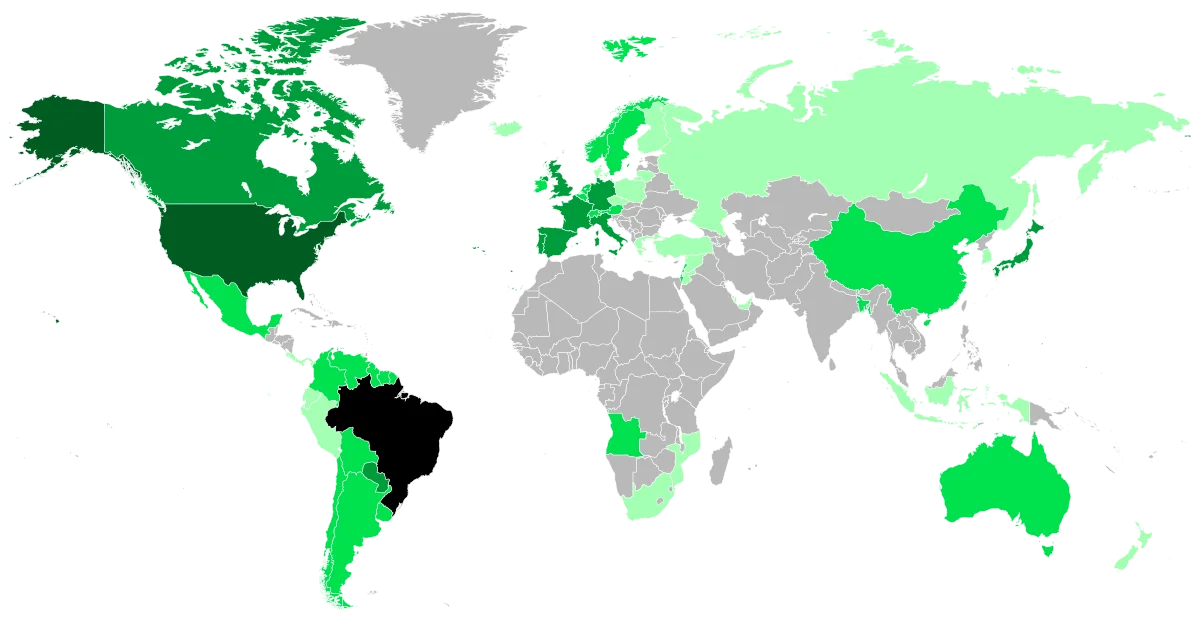
Brazilian immigration has also contributed to the spread of Brazilian Portuguese on the internet, provided that the country has one of the biggest digital populations in the world. 👩💻 Brazilians living abroad use social media and other online channels to communicate with fellow countrymen and others worldwide. This has increased the number of foreigners interested in learning the language spoken in Brazil.
🦜 Brazilian vs. European Portuguese 🔗
Brazilian Portuguese, a variant of the Romance language derived from European Portuguese, exhibits significant differences in pronunciation, vocabulary, and grammar. ✍️ For instance, the more melodic and nasal pronunciation of Brazilian Portuguese contrasts with European Portuguese, and variations exist in vocabulary and grammatical constructions.
Many pronunciation, vocabulary and grammatical differences exist between Brazilian and European Portuguese. A good localization strategy will make clear distinctions between both depending on the market
Vocabulary 🔗
Word: "Ônibus"
🇧🇷 PT_BR: A common term to refer to a public transportation vehicle.
🇵🇹 PT_PT: In Portugal, it is more common to use the term "autocarro" to refer to the same vehicle.
Grammar 🔗
Verb Conjugation: "To go"
🇧🇷 PT_BR: "Você vai" (formal conjugation is preferred).
🇵🇹 PT_PT: "Tu vais" (informal conjugation is preferred).
These examples highlight some of the linguistic distinctions between Brazilian Portuguese and European Portuguese, demonstrating that, although they share the same foundation, there are variations that should be considered during the translation process.

🏖️ Doing business in Brazil without localization 🔗
Why use Portuguese over English? 🔗
Brazilian consumers are more likely to buy from brands that use their mother tongue. This is because they feel more comfortable when communicating with brands that understand their culture and needs.
Using Brazilian Portuguese in marketing and sales strategies increases trust, identification, and brand relevance for Brazilian consumers. To achieve accurate and culturally relevant translation for Brazilian Portuguese, it is essential to involve native Brazilian speakers in the translation process.
Here are some benefits of incorporating native speakers into marketing and sales strategies:
- 💯 Accuracy: native speakers understand the nuances of the language, including idiomatic expressions, slang, and cultural references. This is crucial when conveying marketing messages, as it helps avoid misunderstandings and ensures that communication is interpreted as intended.
- 🤝 Credibility and trust: an authentic use of Brazilian Portuguese creates credibility. Consumers tend to trust messages that sound natural and align with their everyday language. This can positively impact brand perception and influence purchasing decisions.

- 👋 Cultural affinity: by involving native speakers in content creation, companies can align their message with local cultural sensitivities. This creates an emotional affinity that can be decisive in consumer choices.
- 🎢 Market adaptation: language is dynamic and constantly evolving. Native speakers are more attuned to linguistic changes and can help companies stay updated and adapt to the local market.
Moreover, according to data from the British Council, only 5% of the Brazilian population is fluent in English. Thus, a localization strategy becomes crucial to reach the Brazilian market effectively.
Brazilians' shopping and browsing habits 🔗
In Brazil, the steady growth of e-commerce is noticeable, with consumers increasingly comfortable making purchases through smartphones, tablets, and computers, using these devices for research and price comparison.
Social media platforms such as TikTok, Instagram, and YouTube play a crucial role in Brazilian consumers' purchasing decisions. 🛍️ These platforms are essential for discovering new products, receiving recommendations from friends and influencers, and accessing reviews from other users.
Brazilian consumers seek a balance between price and quality, prioritizing the durability of products. Trust is a crucial element in the online shopping process, with a preference for well-known and established brands. Information such as customer reviews, return policies, and warranties are carefully considered before making decisions.
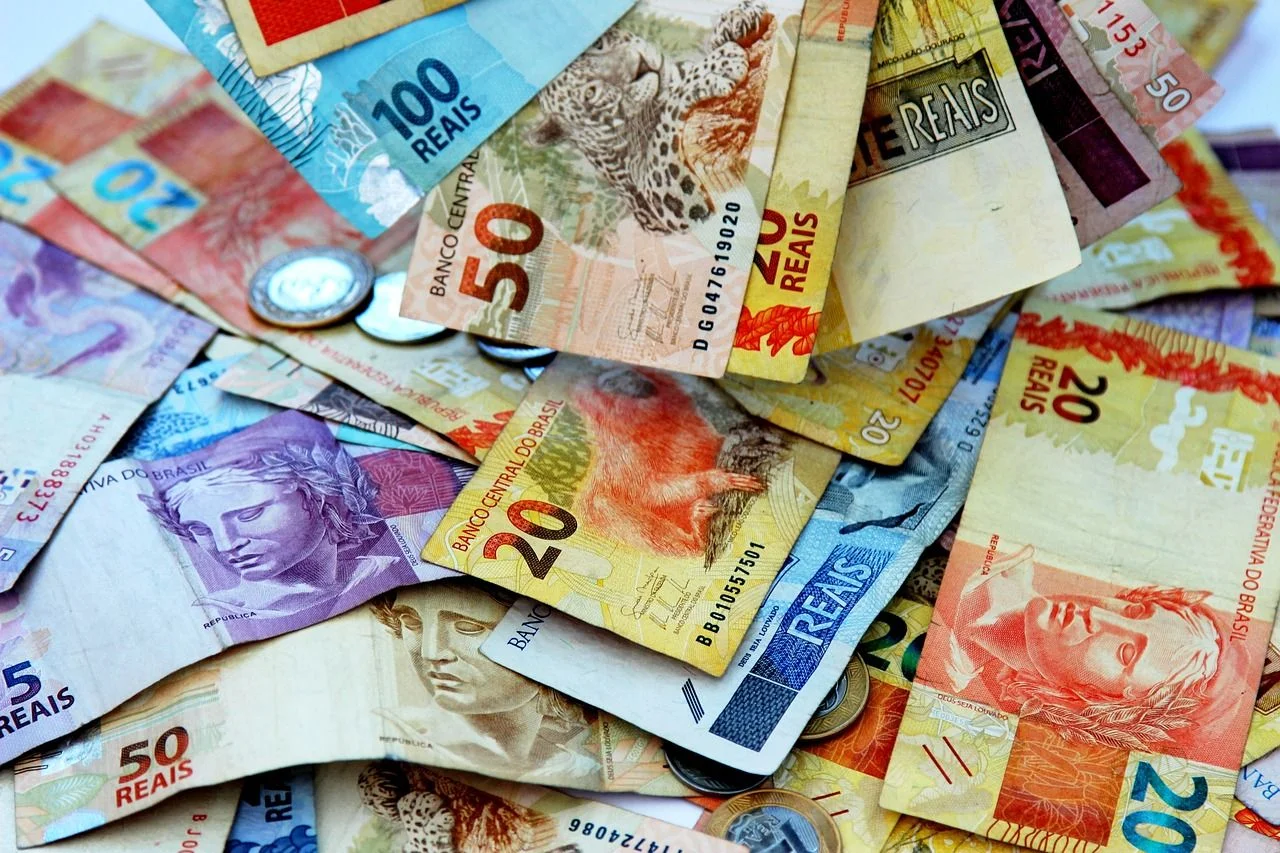
Personalization and a customized shopping experience are highly valued by Brazilian consumers, who expect companies to offer promotions and product recommendations based on their interests and purchase history.
Regarding products in high demand, the Brazilian market excels in various categories. Some areas of growing interest for online consumers in Brazil are:
- 👠 Fashion and apparel
- 🔌 Electronics
- 💄Cosmetics and beauty products
- 🍞 Food and beverages
Therefore, the use of Brazilian Portuguese in digital products has a significant impact on purchasing decisions. In addition to conveying trust and credibility, it facilitates message comprehension, creates an emotional and cultural connection, and enhances conversion rates, providing a more enjoyable experience for Brazilian consumers.
Industries to keep an eye on 🔗
Brazil presents a diverse economic landscape with several expanding industries and substantial internationalization potential. Let's highlight some of these sectors:
📲 Information Technology and Communication (ITC): Brazil's ITC sector is among the fastest-growing, with an estimated growth of 8,6% by 2024. Factors such as widespread smartphone adoption, the rise of e-commerce, and the demand for cloud solutions drive this sector.
💰 FinTech: Brazilian FinTechs are innovating and gaining a global market share by providing affordable and convenient financial solutions. Research indicates that 55% of the participating fintechs expect to more than double their revenue by 2023.
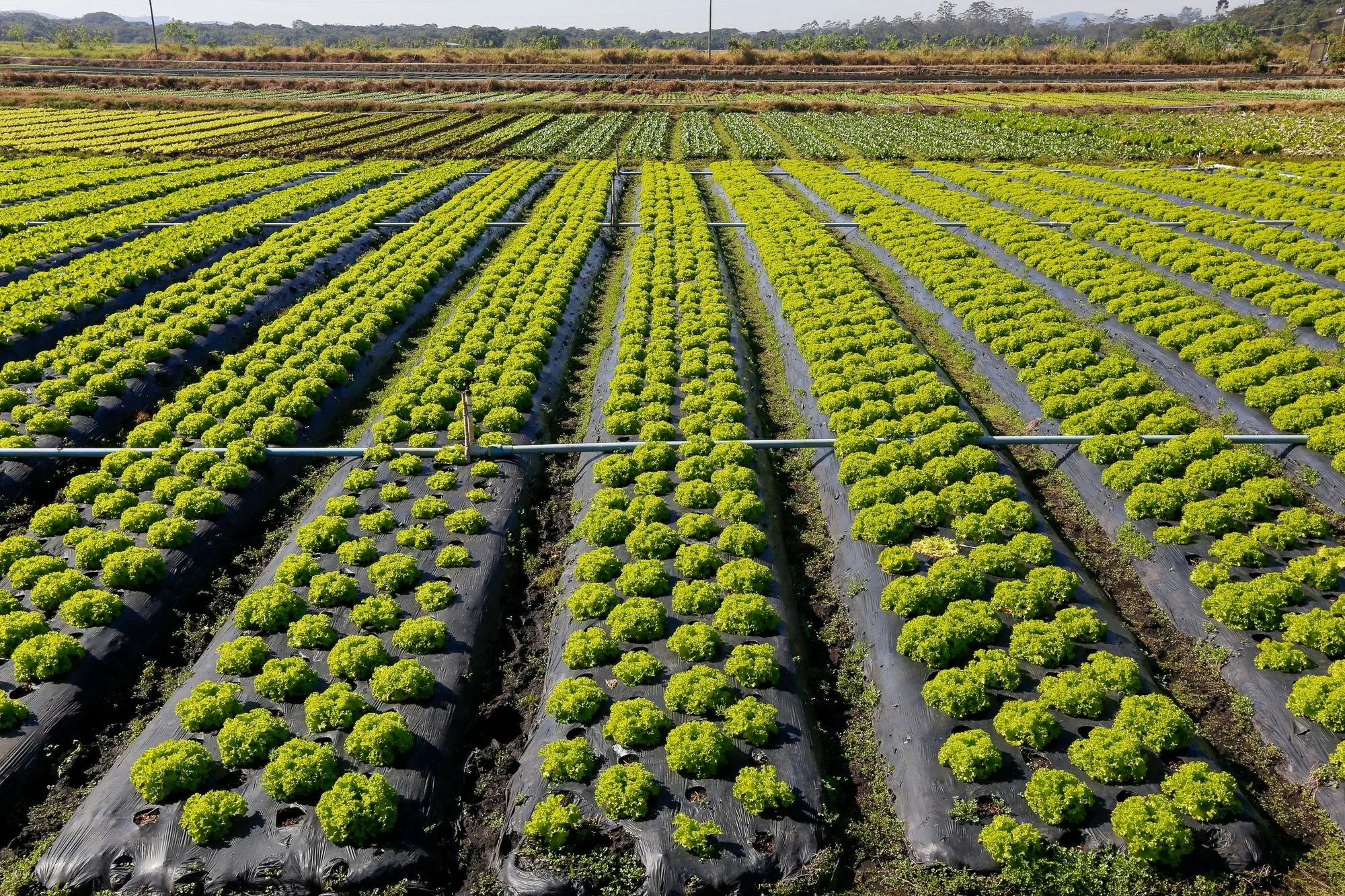
🥕 AgTech: agriculture is a cornerstone of the Brazilian economy, and technology is increasingly playing a role in the field. Brazilian AgTech offers solutions for precision agriculture, livestock management, and agricultural logistics, with substantial export potential to developing agricultural economies.
🏥 Healthcare: Brazil's healthcare sector offers internationalization opportunities in areas such as telemedicine, diagnostic imaging, and generic drug production. A high demand for healthcare services and the pursuit of cost-effective solutions open avenues for Brazilian companies.
🎓 Education: the Brazilian education sector also shows potential for internationalization, especially in areas like remote learning, language education, and vocational training. The use of educational technologies and Brazilian expertise in teaching methodologies can be attractive to international markets.
🤙🏻 Tips for your Brazilian localization strategy 🔗
1. Choose the appropriate language pair 🔗
Choosing an appropriate language pair is the first step to ensuring a successful translation. Considering the target audience, usage context, and the purpose of the translation is crucial.
The most popular language pairs for translation between Portuguese and English include:
- PT-BR to EN: The most common, as Brazilian Portuguese is widely spoken in Latin America, while English is globally recognized.
- EN to PT-BR: Ideal for businesses and individuals looking to enter the Brazilian market.
- PT to EN: Useful for those aiming to reach English-speaking audiences.
Other popular pairs are:
- PT-BR to ES: To access Brazilian and Spanish markets.
- PT to ES: To target Portuguese and Spanish markets.
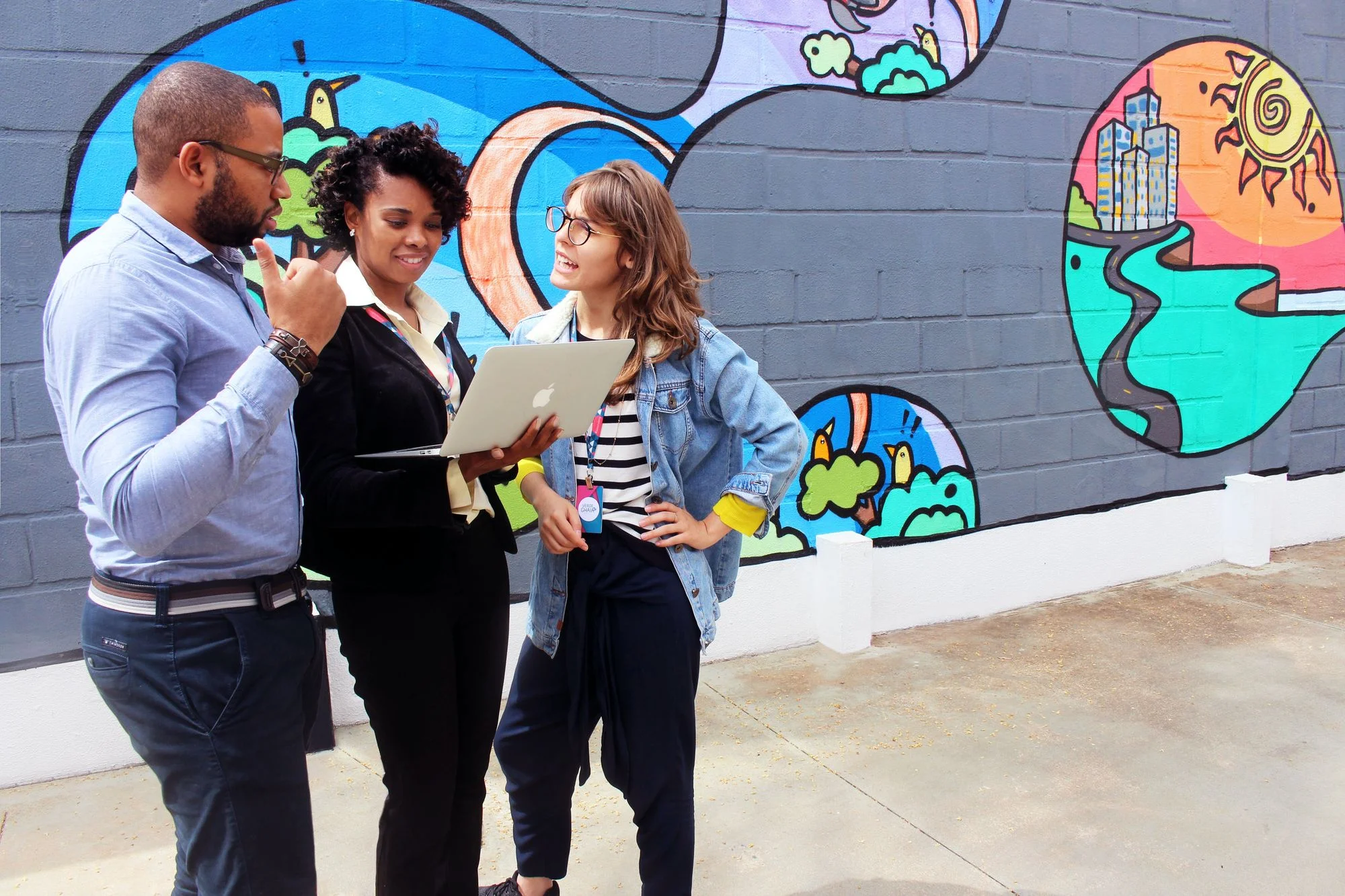
2. Avoid European Portuguese 🔗
As we stated above, European Portuguese, spoken in Portugal, differs significantly from Brazilian Portuguese in terms of vocabulary, pronunciation, and syntax. Using European Portuguese in translations for the Brazilian audience can cause confusion and hinder text comprehension.
3. Consider sociolects/dialects 🔗
Brazilian Portuguese exhibits regional variations known as sociolects or dialects. When translating for the Brazilian audience, it is crucial to consider these variations, as the use of standard Brazilian Portuguese may be inappropriate in some regions of the country. From north to south, there is a multitude of linguistic variations, like Mineiro, Gaúcho, or Nordestino.
For instance, words like 🍠 'aipim,' 'mandioca', and 'macaxeira' all refer to the same root vegetable but vary depending on the region. Within this linguistic tapestry, sociolects also exist, representing linguistic differences within social groups, such as the slang of 'funk carioca' and the Caipira vocabulary from the country's interior, among others.
Brazilian Portuguese includes a variety of sociolects and dialects, like Caipira, Mineiro or Gaúcho, that you need to consider for your localization strategy
4. Be mindful of diglossia 🔗
In Brazilian Portuguese, diglossia occurs between written and spoken Portuguese. The written form is more formal, with complex grammar, while the spoken form is more informal, using simplified grammar. It is essential to be aware of this phenomenon when translating for the Brazilian audience, avoiding using written Portuguese in informal contexts.
5. Get to know Brazilian culture 🔗
Brazilian Portuguese is a living language that is constantly evolving. It is influenced by local culture, which is rich and diverse. To translate effectively into Brazilian Portuguese, it's important to be familiar with Brazilian culture. This will help you grasp the nuances of the language and create translations that are natural and relevant to the Brazilian audience, which is why the help of a native professional localization team is critical to reach your users more effectively.
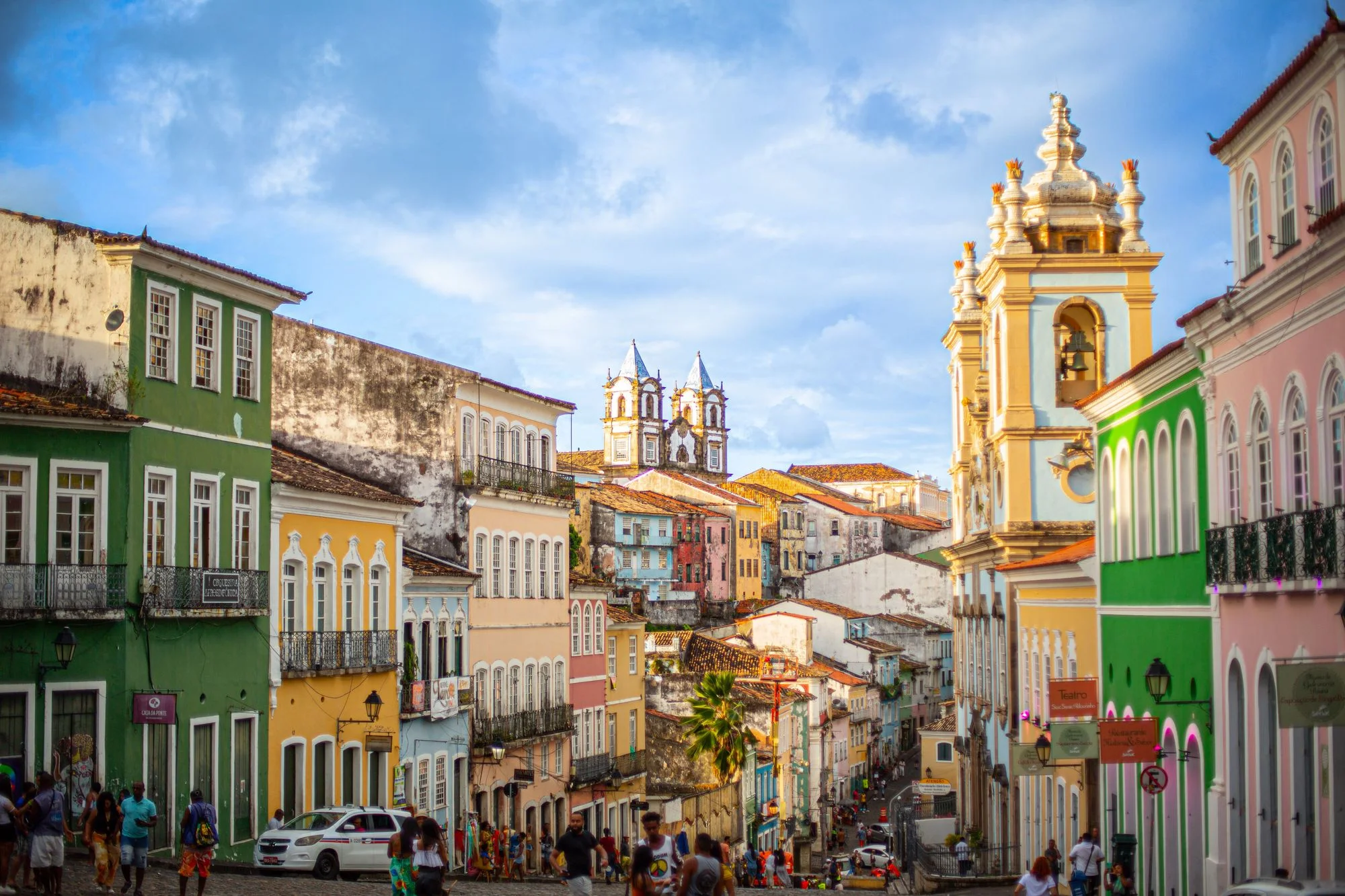
🤸🏼 The benefits of good PT_BR localization 🔗
Great localization from English to Brazilian Portuguese can have a significant impact on a company's business. Here are some of the benefits of localizing your content for the Brazilian audience:
- 🗺️ Expand your reach: localization to Brazilian Portuguese opens doors to a market of over 200 million people. This can assist companies in increasing their sales and revenue.
- 📈 Boost sales: research shows that Brazilian consumers prefer buying from companies that offer content in their native language. Localization to Brazilian Portuguese can help companies increase sales in the Brazilian market.
- 🤩 Enhance customer experience: precise localization ensures that Brazilian consumers understand and appreciate the company's content. This can lead to a better customer experience and more satisfied customers.
- 📚 Avoid misunderstandings: accurate translations help prevent misunderstandings and misconceptions. Brazilian Portuguese has specific nuances that can significantly alter the content of a message if not considered during translation.
- ⚖️ Comply with legal requirements: in some cases, such as legal documents, contracts, or product manuals, translation into Brazilian Portuguese may be a legal requirement. Ensuring compliance with local regulations is crucial to avoid issues.
- 🔎 Boost local SEO: by including relevant terms and keywords in Brazilian Portuguese, companies can optimize their content for local search engines, increasing online visibility and attracting more qualified traffic.
- 💡 Build a strong brand: effective translation can help a company build a strong and positive brand presence in Brazil. This can help the company stand out from the competition and attract new customers.
Localization can help you expand your reach, increase online visibility and connect with local customers, all while building a strong brand presence
🛩️ What about African Portuguese? 🔗
You might be wondering: if I localize my content to Brazilian Portuguese, will it be usable in African countries where Portuguese is the official language?
The answer is not straightforward. Localizing content for Brazilian Portuguese does not automatically guarantee its usability in Portuguese-speaking African countries. Despite sharing a common linguistic root, Brazilian Portuguese has evolved with unique nuances and expressions, making it distinct from the language spoken in African nations such as Angola, Cape Verde, Mozambique, Guinea-Bissau, São Tomé and Príncipe, and Equatorial Guinea.
Content localized for Brazilian Portuguese might be understood by African Portuguese speakers, but it's not the ideal choice for the smoothest customer experience
While there are many shared words and expressions, significant differences exist in terms of vocabulary, pronunciation, and syntax. For example, in Brazil, the word 🚘 "carro" is used to refer to an automobile, while in Angola and Mozambique, the word 🚃 "carro" is used to refer to a train. There are also differences in syntax: in Brazilian Portuguese, the word order in a sentence is generally subject-verb-object, while in Angola and Mozambique, the word order is often verb-subject-object.
In general, content localized for Brazilian Portuguese may be understood by speakers of African Portuguese, but it is important to be aware of the differences between the two language variants. In order to craft the ideal customer experience, we strongly suggest you enroll a professional translation team from the country you're specifically targeting. This also applies to other territories where Portuguese cohabitates with other languages, like the Asian regions of Macao and Timor-Leste.
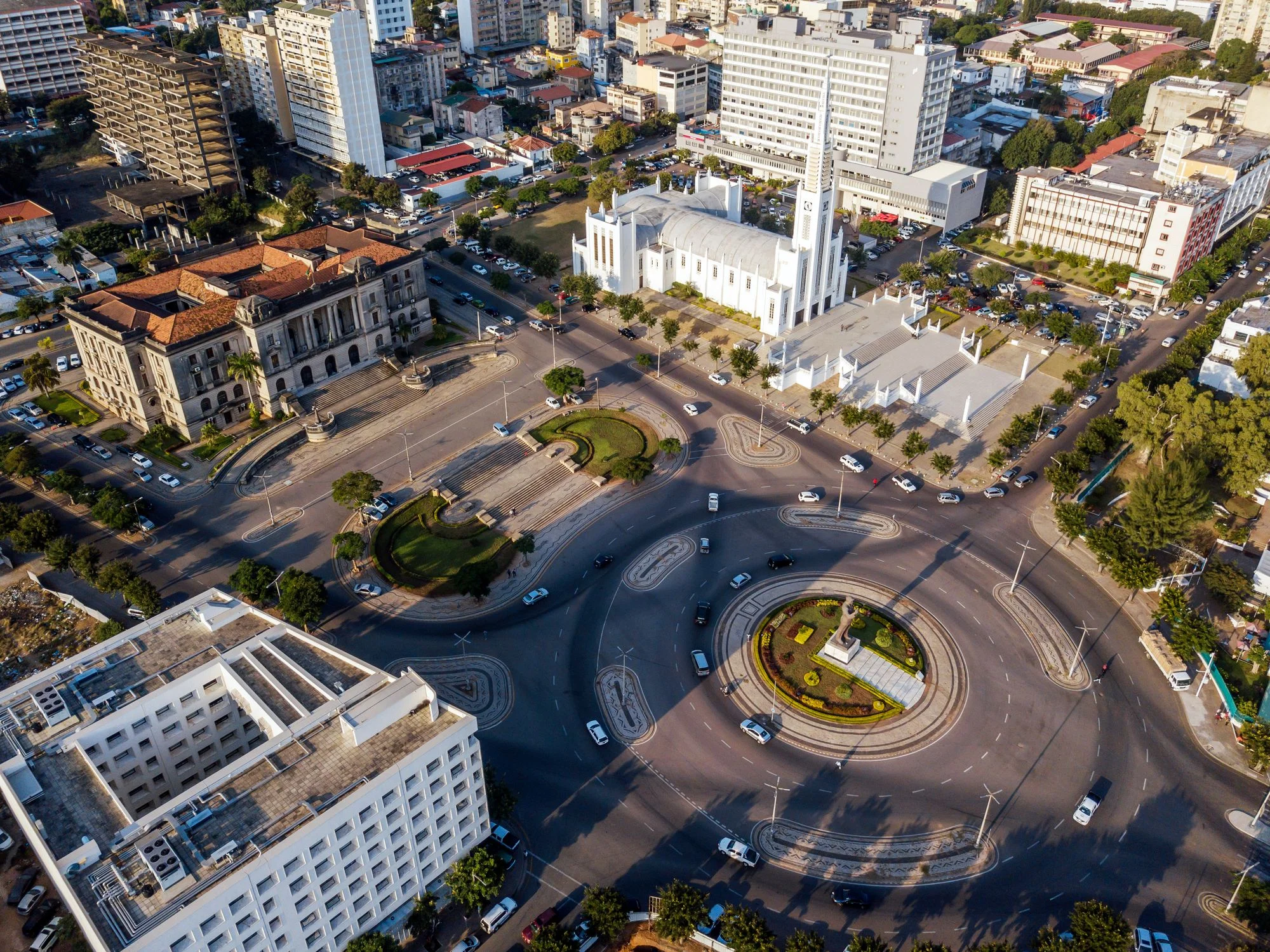
🌈 The future of Brazilian Portuguese 🔗
The Brazilian Portuguese variant has been experiencing significant global expansion, primarily driven by Brazil's growing role on the international stage. The interest in learning Brazilian Portuguese as a second language has been on the rise, not only due to cultural influence but also because of Brazil's economic and diplomatic significance.
Optimistic projections are being drawn regarding Brazil's population and economic growth. The Brazilian population is expected to continue growing at a rate of about 1% per year. As for Brazil's GDP, perspectives are also promising: in 2022, for instance, it was US$ 2.02 trillion, reflecting a cumulative growth of 3.1% over four quarters.
These tendencies are expected to contribute to the global expansion of Brazilian Portuguese. 💬 After all, Brazil is an emerging country with a growing economy, and Brazilian Portuguese is the official language of the country. This makes Brazil an attractive market for businesses and investors from around the world.
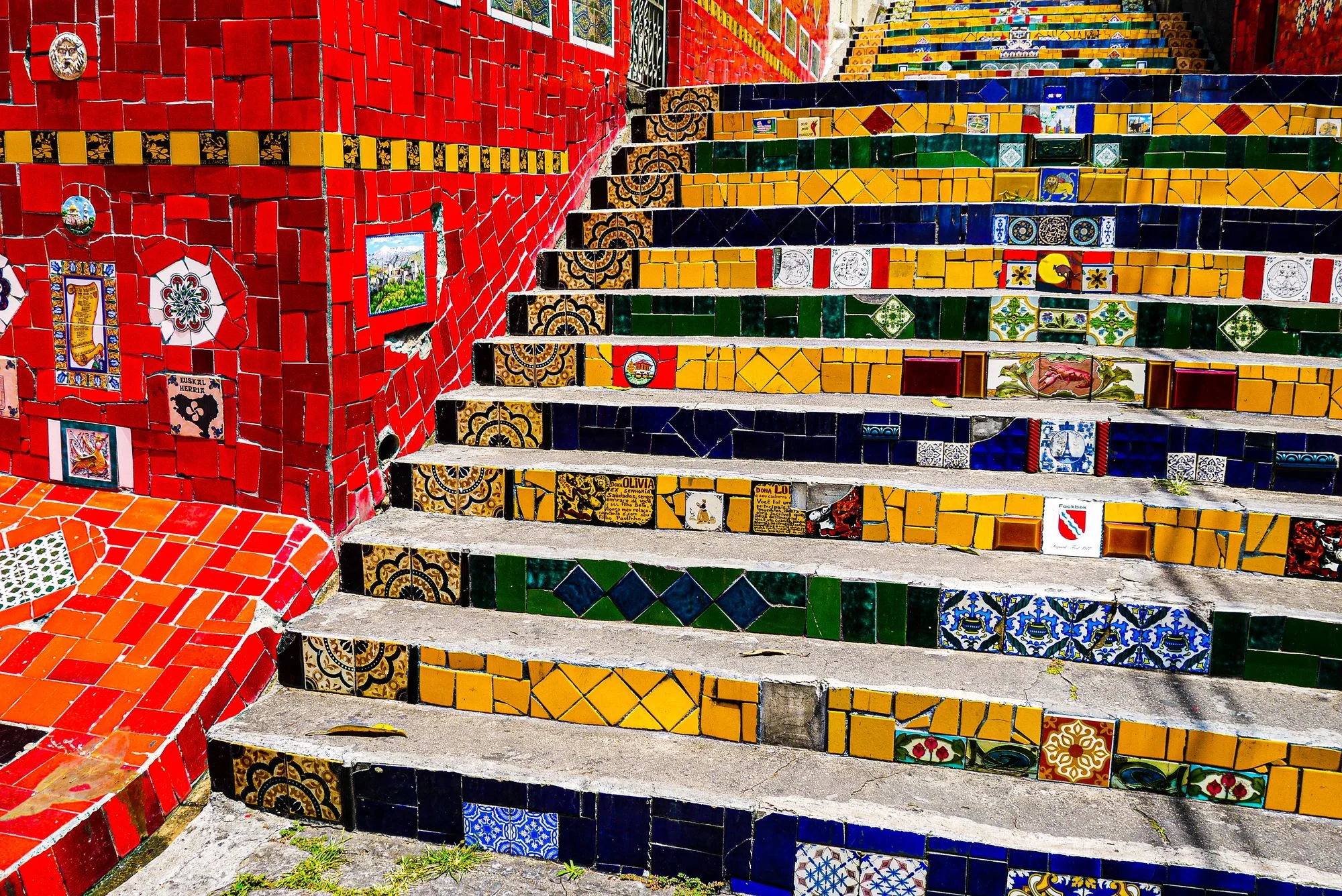
🥭 Start your PT_BR localization journey today! 🔗
Brazilian Portuguese has been growing globally at a rapid pace. As the Brazilian market expands, it is essential to adopt a strategic approach to reach local consumers accurately and meaningfully. 🎯
At Localazy, we combine advanced continuous localization technology with human expertise to ensure accurate and culturally-relevant translations. If you plan on penetrating the Brazilian market, we can help you simplify and optimize your localization workflow. Check out our pricing, feel free to contact us for any questions, and take the first step towards connecting with over 200M Brazilian Portuguese speakers today!



